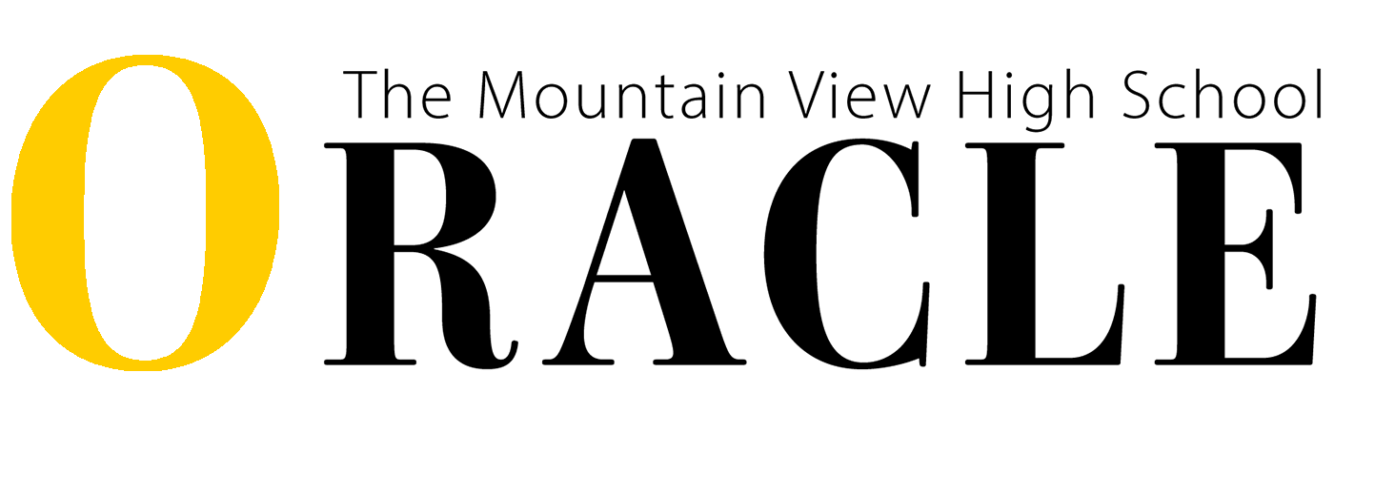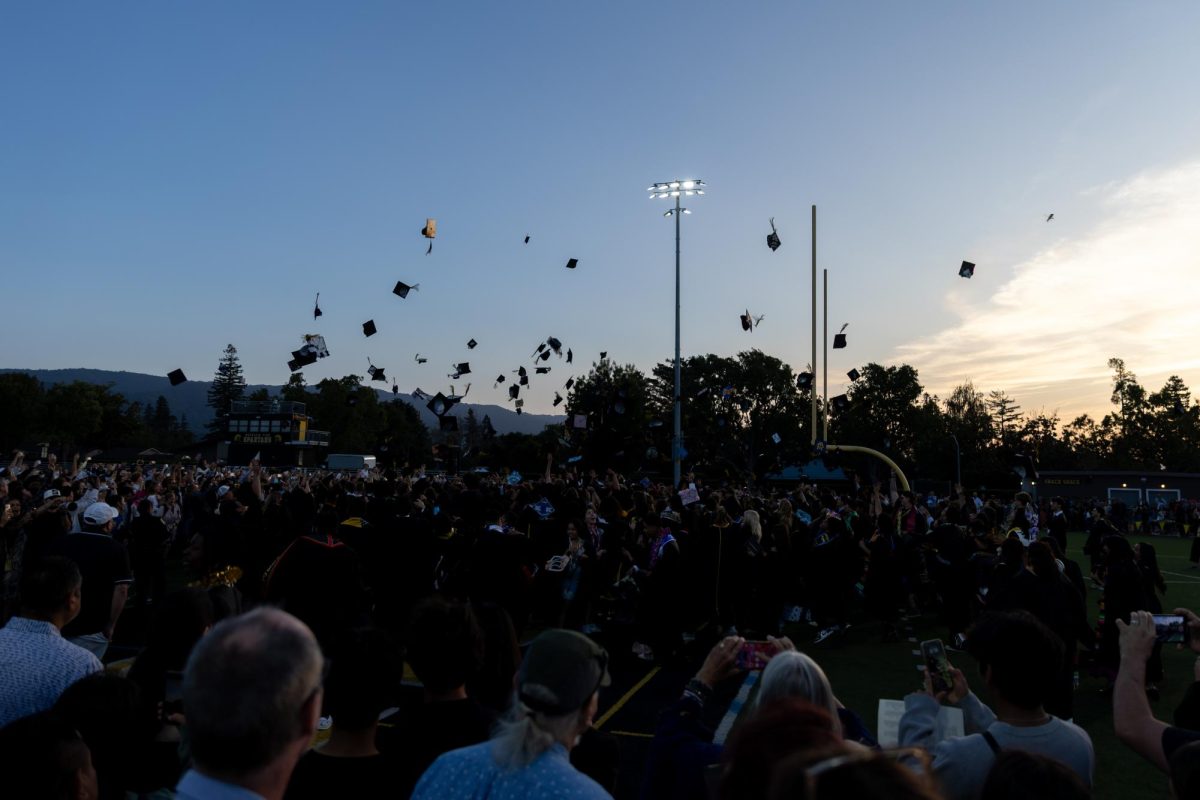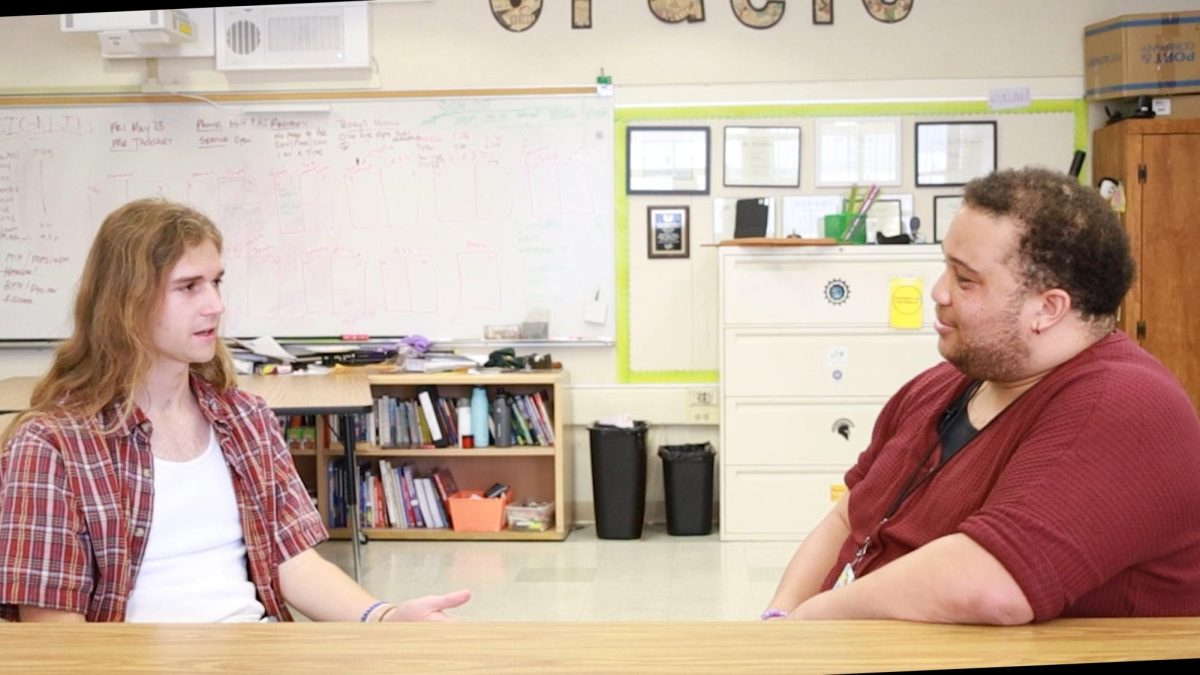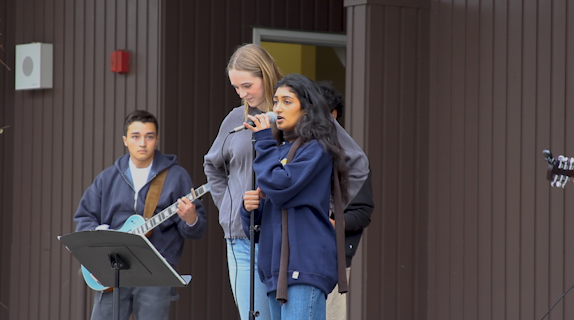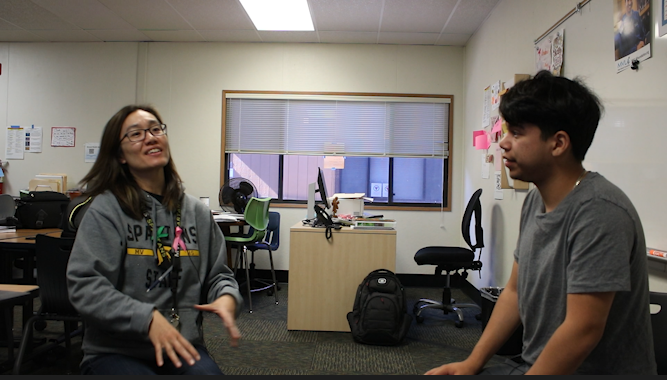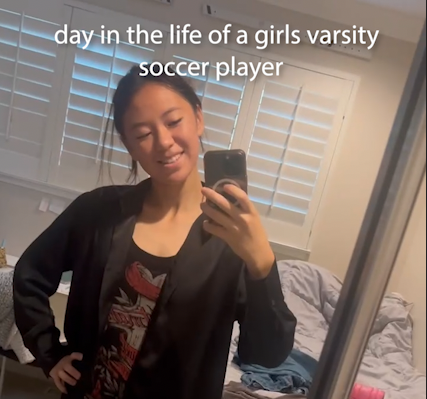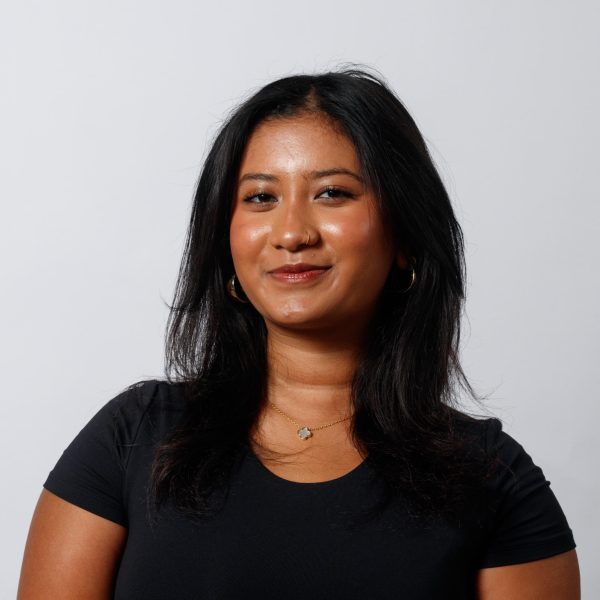
This article was originally published in a print edition of the Oracle in December 2023.
The COVID-19 pandemic. Climate change. The 2020 presidential election. The Israel-Hamas war. These distinct global events all have one thing in common: They have all led to widespread sharing of misinformation and disinformation. Harry and Norman Chandler Professor of Communication at Stanford, Dr. Fred Turner, defined misinformation as unintentionally inaccurate and disinformation as deliberately inaccurate.
“It’s lying or bending the truth or gaslighting for the purpose of persuasion,” Turner said.
In an age of increasing forms of digital communication, media platforms, and news sites, the general population is susceptible to both misinformation and disinformation in more ways than it has been in the past, AVID and English Teacher Steven Kahl said.
Kahl said that with the rise of social media platforms such as TikTok and Instagram, teenagers are trusting more and more what they see on such apps without knowing the possible dangers.
“They’re inviting strangers into their bedrooms, their cars, their friendships, their minds, [and] their hearts,” Kahl said. “They’re inviting strangers in to tell them what to think and how to feel.”
News organizations on both ends of the political spectrum, for example, FOX News and CNN, have contributed to the spread of misinformation and disinformation both through lies, and political bias, said Kahl. For example, FOX News, a known right-leaning source, spread misinformation about the 2020 presidential election, portraying that former president Donald Trump had won, when he did not.
Although some of the disinformation spread on these platforms is quite obvious, Kahl said, viewers likely continue to believe it because it reaffirms their already existing beliefs and biases, which is one way both misinformation and disinformation take root in individuals. This is known as confirmation bias, defined as the “tendency to interpret new evidence as confirmation of one’s existing beliefs or theories,” according to Oxford Languages.
It is important for the general public, especially students, to educate themselves on the credibility of the sources they consume information from, biases that are present, and events or topics that can be particularly susceptible to both misinformation and disinformation.
“If we don’t have people who can be free thinking and who can have a source of information that’s consistently reliable, we will lose our democratic society very very quickly,” Kahl said. “We won’t even know because people will be misinforming us about how that happened.”

In The News
News headlines vary. Some are announced by a broadcaster on live television. Some pop up on phone screens with “BREAKING” in bold font. Others are heard when one turns on the radio in the car.
Headlines surrounding elections, religion, sexuality, international conflicts, and more are all susceptible to misinformation and false advertising, Kahl said. They are a few of the many topics that get misconstrued throughout news media, especially through online platforms.
Misinformation and disinformation can be propagated very easily through the increasing number of online news sites, some of which are unreliable, like those owned by a single entity or those that can be edited by the public, Turner said.
Articles can be published a click, without exhaustive fact-checking or tangible consequences for spreading false information.
Kahl said media platforms have an ethical responsibility to make sure the information they are spreading is being used for neutral or good purposes. However, if the information being spread is harming people, then it is the platform’s responsibility to make changes.
The credible media will go to the extra lengths to fact-check a story, even when they’re competing to be the first to publish a story, Kahl said.
Turner said that publications like the Daily Mail or TMZ still participate in fact-checking to some extent, but run close to writing libel, defined as publication of false statements that damage someone’s reputation.
“What they’re trying to do is sell newspapers or TV shows based on sensationalism and gossip,” Turner said. “I think the tabloids in particular are willing to push the envelope. They’re not willing to break the law unless a huge profit is involved, but they’re willing to push the envelope in a way [The New York Times] wouldn’t be.”
Kahl said that a big motivation for publications such as The Daily Mail or Infowars is wealth, existing mainly to make the corporations money.
“They’ll sell their ‘journalistic souls’ to the highest bidder,” Kahl said.
Pieces published in reputable publications such as the New York Times undergo a rigorous fact-checking process, Turner said. When he did a magazine piece for the paper, the fact-checking process took five days, he said.
It’s not that sites like the New York Times make mistakes, but what makes the difference is that they acknowledge errors and publish retractions, Kahl said.
“Tons of people are watching social media and visiting other sites where [the sites] are making mistakes all the time and often not running retractions for [them],” Kahl said. “That is un-American, that is unpatriotic, and that is not journalism. They’re posing as journalists and they have an agenda, and the agenda is not informing the public about the truth.”
According to a study done by the Pew Research Center in 2023, a majority of American adults, around 86%, get their news from digital platforms.
“They can start using all kinds of fallacies of logic, and if people don’t know what those are and can’t recognize them, they are susceptible to them,” Kahl said.

Kahl said disinformation can be used to grow one’s own political or economic advantage. Both individuals and countries have personal goals they try to push onto others. This can be done through feeding the media information, Turner said.
“People are trying to con you all the time,” Turner said. “People try to get you to report the world the way they see it, to put information in the paper the way they want it.”
Students may overlook the political leaning of news sites and channels, which can make them more vulnerable to believing false information, said Yotam Ophir, a Professor of Communications at Buffalo University.
He said that news channels that are far down on each end of the political spectrum tend to be more biased and misleading, potentially leading to a spread of misinformation. This could be because such news sites tend to be pushing a political agenda, rather than simply reporting objective facts.
Dr. Nolan Higdon, a lecturer of Education and Media Studies at the University of California, Santa Cruz, said that it is important that readers dig deeper into the background and context of the news stories they read.
“When you come across any content, figure out who the author is,” Higdon said. “What are their biases, what are their connections? What are their wars of interest? Then look at their evidence. Who are their sources?”
It is important to distinguish true journalism and entertainment, Higdon said. People must be able to differentiate between distinguished journalists like Christiane Amanpour and commentators and TV personalities like Alex Jones or Rachel Maddow.
Although some news sources, like Fox News, are known to spread biased and politically influenced content, because of confirmation bias, Kahl said viewers may still trust the source.
“They dislike the same people you dislike,” he said. “They comfort you in believing that how you live is right and not deserving of being challenged…It glorifies prejudice in the sacrifice of true news and true opinion.”
That is why, Turner said, it is important to look at news sources from around the political spectrum to expose oneself to differing opinions and perspectives.
To prevent the spread of misinformation, sophomore Yhali Matot said he believes it is important for readers to check the news they consume by comparing with other sources.
“[Anyone] can start spreading disinformation,” Matot said. “Taking that extra step to thoroughly [to] check the information you’re reading is important.”
Kahl said as people become more aware of the copious amounts of false information spread by the media, they become less trusting, to the point where many may not participate in activities needed to keep a democratic society functioning, like voting.
On the other hand, more individuals may participate in a manner where their beliefs are based on misinformation and disinformation, leading to decisions that may not be in the country’s best interest.
“Our vote becomes corrupt,” Kahl said. “We end up with corrupt leaders, corrupt systems, and all that apathy and cynicism and despair becomes even more prominent because of that.”
Social Media
Since the start of the ongoing Israel-Hamas war on Oct. 7, millions of social media users repost, share, and view content about the war daily.
Infographics — visual images such as charts or diagrams used to represent data — have become an increasingly common way to share news through social media platforms like Instagram.
They are a quick and easy way to convey information about current events, and many unassuming users turn to these often colorful and visually-appealing infographic slide shows as a primary source for their information about the war.
Content shared through infographics can be posted with varying intentions — to inform, to rally support, or to fundraise — and although these slideshows may catch the eyes of readers through sensationalized headlines, they can still contain misinformation or misguided messaging, Ophir said.
Turner said that one reason why social media has a large capacity to spread disinformation is because users can repost content instantaneously before fact-checking or investigating the source.
“The relationship between news and truth has always been complex,” Ophir said. “Because technology has changed, the capacity to spread misinformation has increased.”
Since the content individuals view on social media is often reposted or sent by friends and family, people they trust, they may automatically assume that the information is credible, even if it is libelous or from an unreliable source, Kahl said.
He said social media can be used as a tool to take advantage of Americans by psychologically pushing them to believe things that may be false.
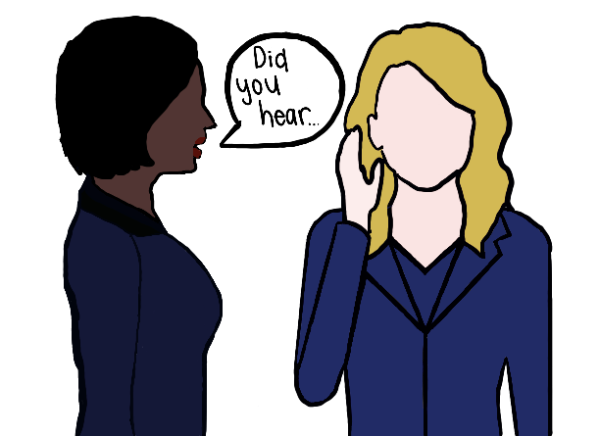
“It is exposing them to all kinds of dangerous beliefs that in the history of human society, have led to some of our worst tragedies,” Kahl said.
Senior Jenna Ersheid said that she thinks a reason why students are so easily susceptible to believing misinformation on social media is because they are “lazy.”
“The more you like something [on social media], the more time you spend on it, and the more you’re going to be fed that information,” Ersheid said.
For high school students, it takes more work to filter out false information on social media through fact checking and reading news stories from reputable sources than to take what they see at face value, Matot said.
“On social media, nobody takes the step to verify or check the information that is being shared,” he said. “You see the catchy, aesthetic Instagram post and you think ‘oh this must be correct.”’
Reichi Lee, the Director of Curriculum and programs at My Digital Tat2, said that as social media has evolved, misinformation can look increasingly realistic, making it more challenging than ever to distinguish between accurate and inaccurate information.
“[Social media posts] look so realistic, it sounds so realistic and there is no delay or any other markers of fakeness,” Lee said. “Technology has advanced so that deep fakes [on social media] actually look very real.”
According to a study conducted by the Pew Research Center, U.S. adults under 30 are beginning to trust information on social media almost as much as they trust national news outlets.
Ophir said that the spread of misinformation and disinformation on social media can lead to commonly-shared misconceptions, for example, elections and accurate events regarding a war.
A 2021 study conducted by the National Library of Medicine examined the prevalence of misinformation relating to physical health and wellness across various social media platforms, including Twitter, Instagram, YouTube and Facebook. The study found the highest proportion of misinformation — around 87% — in posts involving smoking and drug products such as opioids and marijuana.
“People need the right information and they need the accurate information, or else they may eventually avoid doing the responsible thing and keeping themselves and their friends protected,” Ophir said.
Recent Events
Ophir said the Israel-Hamas war is an example of an ongoing conflict shaped by a long and complex history, that most people who are not directly involved with will never fully understand.
“You are expected by others to immediately have a moral, normative, or ethical position on what’s happening and the fact is, most of us don’t understand what’s happening,” Ophir said.
Ophir said in conflicts such as the Israel-Hamas war, there are two sides that will not always share the most accurate and timely information for all kinds of reasons. He said this becomes problematic when people feel pressure to take a position on a conflict, because there is no good or bad side to take.
“It’s not like you have one side that’s evil and one side that’s purely good,” Ophir said. “There is a lot of history, there’s a lot of conflict, there’s a lot of complications, religious, social, cultural and geographic.”
Senior Saleh Khan said that in relation to the Israel-Hamas war, the speed with which individuals can post on social media could contribute to a positive feedback loop of misinformation.
“People are reposting, and reposting, and reposting,” Khan said. “After an hour, it just turns out to be false. That’s definitely a big problem.”
Ersheid said that misinformation has been manipulating and emitting biased narratives that support one side rather than the other side, in terms of the war.
“Once they believe one thing, they’re going to start looking for things that support it and they create a bubble,” Ersheid said. “They can’t really get out of that bubble unless someone tells them the truth or they force themselves out.”
As people consume information online, it is important they take initiative to determine what is helpful or factual when we’re learning about recent events, Senior Kelly Kokka said.
“People want to take sides because they want to seem like they are informed,” Kokka said. “If you see something online, which I’ve been seeing a lot of people posting graphics or information on Instagram, you should wait a week, and then if it’s still important, if it’s still relevant, if it’s still accurate, post it to your platform.”
Turner said the COVID-19 pandemic was an example of how both misinformation and disinformation can negatively shape the public perception of how people should react to ongoing crises, like for example taking the vaccine or staying at home.
For example, during the pandemic, former president Donald Trump, spread disinformation about the virus and steps taken to reduce its spread, Turner said. For example, according to an article written by ABC News, Trump publicly denounced mask mandates and vaccine requirements.
Turner said believing in anti-vaccine material resulted in many not getting the vaccine, eventually leading to death for some. According to a podcast recorded by NPR, vaccine misinformation made the death toll worse, citing a Brown University analysis which revealed 319,000 deaths from unvaccinated adults. He said consuming misinformation and disinformation can have irreparable consequences.
Staying Informed
In a time when misinformation runs rampant, Ophir said that media literacy, defined as possessing the tools to think critically and having the ability to understand media, is crucial.
One of the most effective ways to evaluate the credibility of information is lateral reading, said Ashley Edwards, a News Partnerships Manager at Google. Lateral reading is a technique that examines sources that discuss the original source, rather than solely relying on that original source itself.
“It involves stepping away from the initial source and exploring what other reliable and reputable sources have to say about the topic or claim at hand,” Edwards said.
Lee said it has become increasingly important to know and recognize the value of media literacy, which is the ability to assess, analyze, and evaluate information,
“These skills are much more universal,” Lee said, “All people, not just young people, can benefit.”
Matot said he uses skills similar to lateral reading to make sure the information he consumes is reliable, trustworthy, and dependable, emphasizing how crucial it is to double-check the information that one hears.
Edwards and Ophir agreed on the importance of teaching media literacy in universities as well as having the tools to think critically.
“We need to teach students from a pretty young age to understand how media works,” Ophir said.
Kahl said that schools and universities need to better teach students how to manage misinformation on their social media.
“Our schools are not doing a sufficient job of teaching people about this, how to spot it, how to keep yourself from being engaged in it, and how to fight back against it,” Kahl said.
Educational institutions are not doing a good job of teaching students about the present. Most instruction characterizes the past and future, Kahl said.
“We’re neglecting to discuss the present and the malign influences that are here in the present,” Kahl said. “Until we do, we’re in more and more jeopardy every school year.”
However, this responsibility does not and should not only fall on schools. Adolescents and adults alike can work together to help spread knowledge. With the increased proliferation of misinformation, it is imperative, now more than ever, to create an educated society with high rates of media literacy. But to do this, the dissemination of misinformation and disinformation needs to be combatted in some way, shape or form.
“I think we are part of the problem,” said Lee, “I think we could all benefit from stopping to assess and analyze and evaluate [information].”
